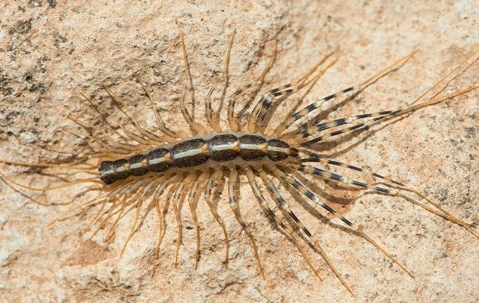The Secret To Effective Centipede & Millipede Control
Spiders aren’t the only arthropods that are creepy crawly. Urbanex wants you to meet the spider’s distant relatives: centipedes and millipedes.
What’s The Difference?
It’s a common question about millipedes and centipedes. What’s the difference between them? Both creatures have a long worm-like body and antennae. But, in all other areas, these myriapods are quite different.
A millipede, which literally means “thousand” legs, has 2 pairs of legs per body joint. Contrary to what their name suggests, millipedes do not actually have a thousand legs. On average, millipedes have between 400 to 750 legs, depending on the species. As they grow, millipedes shed their old skin, then eat the skin for nutrients.
Millipedes play an important part in the ecosystem as decomposers. Their rounded bodies help them tunnel through terrain as they scavenge for food. A millipede's diet typically consists of decaying leaves, fungi, and the occasional insect or snail. They need a damp living environment because millipedes don’t have a wax coat on their exoskeleton that helps them retain water. For this reason, it is common for homeowners to find them around their home in garden beds, under rotting woodpiles, and in other moist locations. When millipedes come under distress, they secrete a defensive toxin to ward off predators.
Centipedes only have one pair of legs per body segment and fewer legs than millipedes. Dependent upon the species, centipedes can have anywhere from 15 to 177 legs. Unlike the tubular shape of millipedes, centipedes have flatter bodies that enable them to scurry along the ground quickly. Centipedes are predators. These carnivorous crawlers prey on other insects, wrapping them up with their many legs and delivering a deadly sting. Possessing a fake antenna on their tales, they trick hunters. When the hunter attacks, believing its prey is off guard, centipedes defend themselves. Equipped with stingers, centipedes inject venom into their adversaries and prey alike. Like millipedes, centipedes prefer dark, damp areas. Knoxville homeowners typically find them in basements, bathrooms, and undeveloped areas of the home.
Are Centipedes And Millipedes Dangerous?
Millipedes and centipedes are driven into a home when their environment becomes unsuitable. Excess rain and flooding as well as drought cause these pests to seek more favorable living conditions.
More than anything, millipedes and centipedes are a nuisance as they congregate, sometimes in large numbers, in a home. They do not pose any health risks. Most species of centipedes don’t contain venom that is poisonous to humans. Similarly, the poison millipedes secrete causes no serious harm. But the secretion may cause skin irritation. In fact, centipedes are known to hunt other harmful pests in homes like roaches, termites, and flies.
How To Prevent Centipedes And Millipedes From Entering Your Home
We understand that having these pests in your house can be disturbing. That’s where Urbanex can assist you. We have compiled a helpful list of tips on how you can prevent millipedes and centipedes from entering your home.
Remove moisture from your home and maintain properly functioning sinks, gutters, and pipes to ensure no water builds up.
Seal any cracks or holes that serve as entry points to your home.
Store firewood away from your home. This is a haven for centipede and millipede eggs.
Make the inside of your home bug-free, cutting off the centipede’s food sources.
If you need advice or assistance, contact the team at Urbanex. Our comprehensive pest control services include an initial service, a follow-up call, and a bi-monthly visit to ensure your pest problem is taken care of. Reach out to us to get started on having a pest-free home!
Request Your Free Inspection
Complete the form below to schedule your no obligation inspection.

